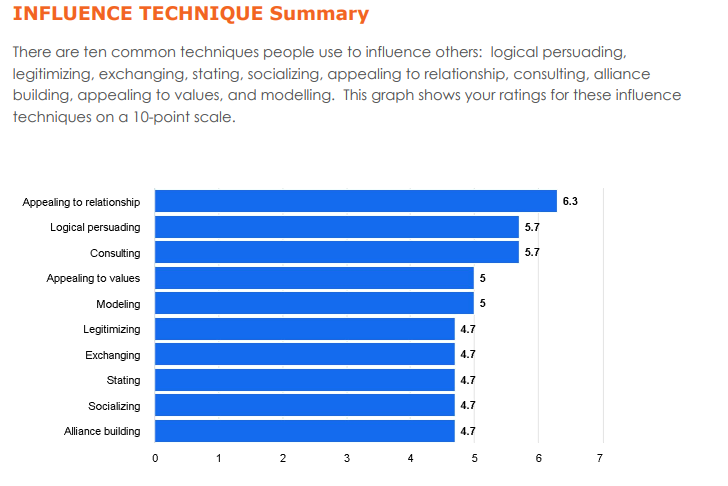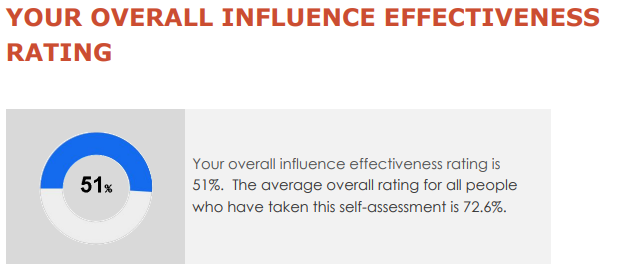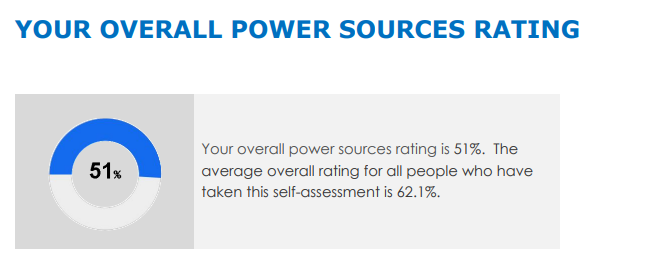In companies, it is crucial to know and use the concepts of power and influence processes as they are integral behaviors in creating a legacy of leadership. Thus, leaders must be able to comprehend the power and act on it. Power and influence are crucial methods by which things are done in organizations, inherently political institutions. A discrepancy between these two values generates an imbalance in most people. Resistance and a lousy culture result from the excessive use of power with little influence. Influence without power, on the other hand, has an impact on decision-making and advancement. Therefore, knowing how to strike the correct balance of power and influence is critical for attaining specific organizational objectives.
There are different sources of power that leaders usually use to get others to act or change behavior. In 1959, renowned social psychologists John R. P. French and Bertram Raven performed research that indicated that power could be split into five categories: Reward, Coercive, Legitimate, Referent, and Expert powers (Abdulaziz et al., 2016). A person has reward power if they control desirable resources such as income, benefits, human resources, or capital, influencing others’ actions or behaviors. In other terms, it can be defined as a person’s ability to influence other people’s behavior by supplying them with what they want (Greenberg, 2011). The ability to affect others by sanctions or other adverse action is known as coercion power (Nelson and Quick, 2012). As a result, coercive power can be described as a person’s ability to influence other people’s conduct by punishing them or generating a perceived danger in doing so.
Legitimate power, also known as position power, refers to a person’s ability to influence the behavior of others because of their position in the organization. A grading system is used in many organizations to position employees, which determines their lawful abilities (Greenberg, 2011). Strong relationships between a leader and their followers produce referent power. It is the leader’s potential influence because of trust and affiliation. According to Lunenburg (2012), referent power is a person’s ability to influence the behavior of others because they admire and respect them.
Expert power is defined as a person’s ability to influence others’ behavior by recognizing knowledge, skills, or abilities (Luthans, 2011). By grasping these many types of power, a person can learn how to maximize the positive ones while avoiding the negative power bases that managers rely on.
The power to influence how a person develops behaves, or thinks via relationships and persuasion is known as an influence. According to the reported frequency of deployment of various influence strategies, Kipnis and Schmidt (1988) classified four types of influencers: shotgun, strategist, ingratiatory, and bystander. Shotgun managers were active influence agents who used all six upward influence strategies regularly. Managers who mainly used rational persuasion had just a moderate level of real influence. Ingratiators employed Friendliness tactics the most, with the other strategies being average (Kipnis & Schmidt, 1988). The use of all six upward influence tactics was minimal among bystanders.
I have done the self-assessment tests on “Influence Effectiveness” and “Power Source.” According to the report, based on the results, my overall influence effectiveness rating is 51% which is below the average overall rating (72.6%). It was surprising that my assessment is below the average, which means that I should improve my influence techniques. In my case, the top three methods with the highest points appealed to the relationship with a grade of 6.3, logical persuading corresponding with a quality of 5.7, and consulting with 5.7 points. Even though this technique is the most comfortable and practical for me, the results are still below the average global norm. Talking about the three techniques that received the lowest grades, there are stated, socializing and alliance building with 4.7 points for each. Overall, analyzing all the results obtained, it could be concluded that the most common techniques for me are the social influence approaches.
As for the “Power Source” self-assessment, my overall power sources rating is also 51%, which is below the average rating (62.1%) among all people who have retaken this self-assessment. Character, information, will, and attraction are the most potent sources of power, meaning that I will tend to rely on these sources of power in influencing others. However, such sources as history, resources, network, and expressiveness should be strengthened as these sources received the lowest points despite their importance in making me more influential. From the first group of confidential sources, the highest grade I received was for the character with 7.3 points, which is in the global norm, which means that I view my character as about the same as most other people. As for the organizational sources, the most potent source for me was information with 63%, which is a much higher rating on information power than the norm (52.7).
Analyzing which of the four clusters of influence mostly describes my case, I would say that the Tactician is mainly about my results. The highest points I received are rational approaches, which describe the Tactician case, according to the results. This rating indicates how effective I am at influencing others by explaining what I want, offering sensible or logical reasons for my position or requests, and providing proof or evidence to back up my arguments. As for the source of power, expert power lies in my case as the self-assessment showed that my results are higher than the norm in the head of information.
The concepts of power and influence are intertwined so that everyone can understand and influence others. Given the duties and possibilities doctors and other health care employees have to exercise leadership and power responsibly to develop patient-centered and healthcare organizational goals, both are studied in medical and health care contexts much too infrequently. Successful nurse leaders need to know how to get around it to succeed. Leaders should seek authority and influence as though their job success relied on it because it does.
References
Abdulaziz, T., Hazaz, A., Kenny, T. & Gazi Md Nurul I. (2016). Power and influence: CEO power and the use of tactical influence. Journal of Management and Strategy, 7, 46-49.
Greenberg, J. (2011). Behavior in organizations. Prentice Hall.
Kipnis, D., & Schmidt, S. (1988). Upward-influence styles: Relationship with performance evaluations, salary, and stress. Administrative Science Quarterly, 33(4), 528-542.
Lunenburg, F.C.(2012).Power and leadership: An influence process. International Journal of Management, Business, and Administration, 15(1), 1-9. Web.
Luthans, F. (2011). Organizational behavior (11th ed.). McGraw-Hill.
Nelson, D.L., & Quick, J. C. (2012). Understanding organizational behavior (4th ed.). South-Western/Cengage Learning.
Appendix A




